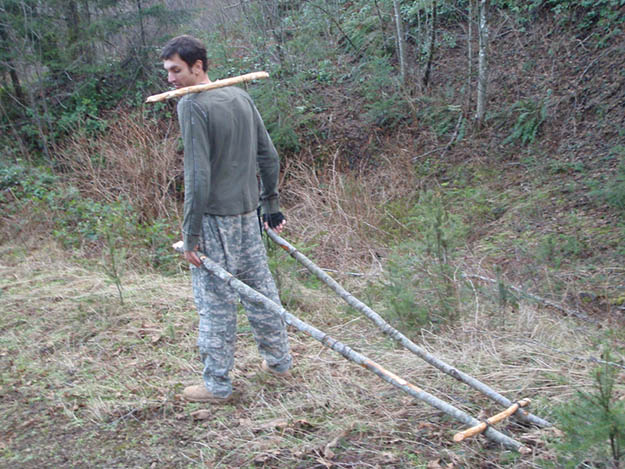There are many situations in survival, or even life in general, in which you might have to carry an injured person. Ambulances are simply not always going to be able to arrive right when and where you need them to, and you might find yourself at some point faced with the task of having to transport an injured or sick person for a bit of a distance.
There are a few basic rules to learn if you want to do this effectively, and properly. First of all, you want to make sure that it is, in fact, your only option. If there is a way to treat the patient, rest, and wait a bit where you are without posing immediate risk to the patient, do this. For instance, with a sprained ankle, or extreme fatigue, something that is unlikely to get worse if you simply wait a bit, do it. Or, if the patient is in the position to wait it out on their own while you go get help and there is no clear danger posed to them, it will save everyone time and energy to do this.
However, in many cases, moving the patient to a safer area might be your only option. For instance, if they are ill and exposure would only worsen their condition, they are bleeding or injured in a way that exposes them to risk of infection, or they are in need of immediate hydration or shelter, it will be safer to transport them yourself.
How to carry a patient
If the patient can help you to bear their weight in any way, always opt for this. The most common way to do this is if they are able to put their arm around you and help you support their weight a bit.
If they are unable to help and you need to carry them fully, over-the-shoulder, or “fireman carry” is the best way to carry an adult. Do this by  getting down on one knee, putting the patient’s arms over your head. Then, stand up, and shift their weight over across your back (see pictured). If the patient is a child, carry them in your arms if this is easier.
getting down on one knee, putting the patient’s arms over your head. Then, stand up, and shift their weight over across your back (see pictured). If the patient is a child, carry them in your arms if this is easier.
You can also use a rope, if you’re physically incapable of carrying them on your back without some assistance, or have a long way to go. Make a loop under your patient’s arms, and then tie the loop across, so you can carry them sort of like a backpack.
Finally, if you have the time and resources, you can make a pole stretcher by  suspending the patient between two long sticks or poles, and dragging the patient in it, as if it is a cart with no wheels. This can be very effective, with the right equipment.
suspending the patient between two long sticks or poles, and dragging the patient in it, as if it is a cart with no wheels. This can be very effective, with the right equipment.
When you have a seriously injured or ill companion and need to get them to safety quickly, being prepared to carry them properly can save you both time, energy, and potentially, a life.
Are You Prepared for This Deadly Threat?
Complete Health Transformation Without Drugs or Surgery…
Having Trouble Sticking With Paleo?


